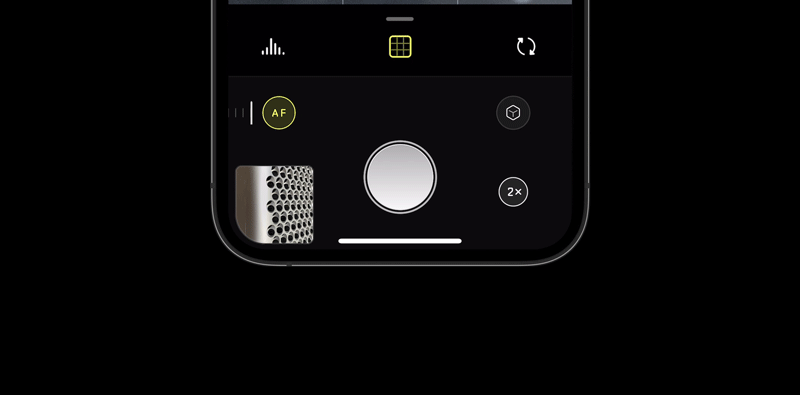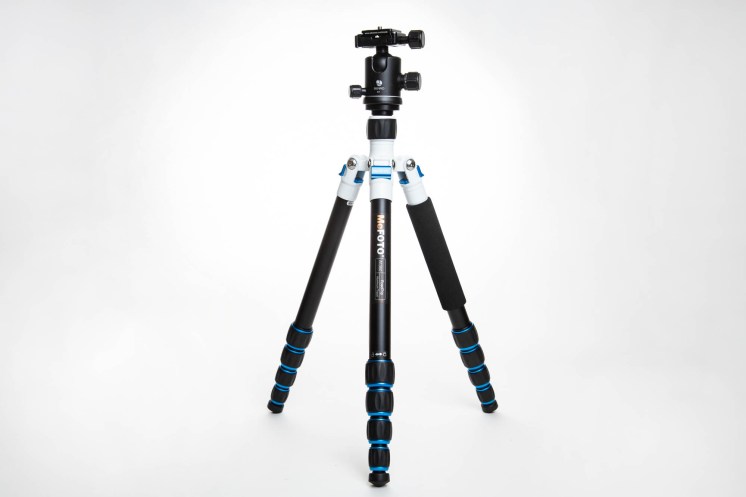 |
Blackmagic Design has announced DaVinci Resolve 17, the latest major release of its flagship video and audio editing software. DaVinci Resolve is ‘the world’s only solution that combines editing, color correction, visual effects, motion graphics and audio post-production all in one software tool.’
DaVinci Resolve 17’s primary new features include HDR grading tools, redesigned primary color controls, an AI-based magic mask, a next-generation Fairlight audio engine and much more. Blackmagic states that in total there are over 100 new features and 200 improvements to existing features.
The new HDR grading feature is accessible within the software’s color page. Users can create new color wheels with ‘custom roll-off for specific tonal ranges,’ resulting in additional creative control when making fine adjustments. The new wheels include control over exposure and saturation within each zone and are color space aware, allowing for uniform results.
Additional improvements to colorwork include mesh-based warping tools. You can adjust hue and saturation or chroma and luma. Adjustments are performed by dragging control points and Blackmagic Design promises ‘clean, natural-looking adjustments.’ Primary color controls have also been redesigned in the software. With respect to color space, DaVinci wide gamut and DaVinci intermediate are new timeline color space and gamma settings which deliver a universal working color space. Blackmagic states that ‘it’s larger than what cameras can capture’ and that ‘customers will never lose image data, no matter where it comes from.’
 |
| DaVinci Resolve 17 includes numerous improvements to color work, such as HDR Color Wheels, Custom Curves and more. Image credit: Blackmagic Design. Click to enlarge. |
The Fairlight Audio Core in DaVinci Resolve 17 has undergone major changes. Blackmagic says it is ‘the world’s fastest and highest quality solution for audio post-production.’ Fairlight Audio Core is a low latency, next-gen audio engine that intelligently manages CPU cores and threads in your computer. With the new Fairlight Audio Core, you can work with up to 2,000 tracks at a time with fully supported real-time effects, EQ and dynamics processing. DaVinci Resolve 17 promises ‘sample-accurate editing tools’, ADR, Foley and Fairlight FX (like reverb, de-esser, hum remover and more). You can mix and master stereo audio, 5.1, 7.1 and 3D audio formats. For improved performance, you can also utilize an optional Fairlight Audio Accelerator Card. Further, with the software’s multiple user collaboration feature, multiple sound editors can work on the entire project at the same time.
A new transient analysis tool has been added. This tool automatically detects individual words, beats or sound effects. Transient markers are displayed in the waveform as vertical lines and can be navigated by users via the arrow keys. Blackmagic states that these markers make it easier to identify specific parts of a sound when editing audio. You can also now see larger audio waveforms while trimming.
 |
| Image credit: Blackmagic Design. Click to enlarge. |
The DaVinci Neural Engine allows for automatic mask creation for an entire person or for specific features such as a face or arms. Further, ‘customers get matte finesse tools, the ability to add and remove strokes and automatic tracking.’ When editing in 16:9 HD or Ultra HD, you can now quickly create square or vertical versions for publishing to platforms such as Instagram. The Neural Engine helps here as well by automatically identifying faces and repositioning them inside the new frame, thus saving time.
Additional time-saving features include the new multi-column view for viewing effects, transitions and titles. The new workspace includes description icons, plus you can cover the cursor over an item to see a live preview in the viewer. The edit page includes ‘dozens’ of time-saving new features as well. These include the ability to manage independent proxy media, more easily synchronize multicam clips, create a sync map, generate render files for any portion of the timeline, make source side adjustments and much more.
Doubling back to multi-user collaboration, this feature is now included in the free version of DaVinci Resolve 17. This means that multiple free users can collaborate on the same project, across multiple devices, simultaneously. Of course, the free version doesn’t include all new features, but it includes a lot. A quick note that it appears that a much-requested feature, ProRes RAW support, doesn’t appear to be coming in DaVinci Resolve 17.
 |
| Image credit: Blackmagic Design. Click to enlarge. |
Of DaVinci Resolve 17, Blackmagic Design CEO, Grant Petty, said, ‘This is a massive update and it has amazing new technology and features for colorists, audio engineers, editors and visual effects artists. While the new color science, HDR grading and improvements and Fairlight usability are the most noticeable features, what I am most proud of are the thousands of small improvements that customers will notice every day!’
There are many features and improvements in DaVinci Resolve 17 that are beyond the scope of this article, so let’s quickly summarize the primary features of DaVinci Resolve 17:
- Next generation HDR color correction with customizable wheels and tonal zones.
- Mesh and grid based color warper delivers an entirely new way to transform color.
- Magic mask automatic object isolation powered by the DaVinci Neural Engine.
- Improved color management with tone mapping and color space aware tools.
- Massive DaVinci wide gamut color space for higher quality image processing.
- High speed audio editing with new keyboard and mouse context-sensitive tools.
- Fairlight Audio Core engine with auto load balancing and support for 2,000 tracks.
- Revolutionary FlexBus architecture for audio routing without limitations.
- Automatic transient detection for beats, words, and sound effects.
- Support for massive audio projects with thousands of tracks on a single system.
- Metadata based card view in media pool on cut page.
- Precision audio trimming on the cut page timeline and graphical trimmer.
- Smart reframe powered by the DaVinci Neural Engine on cut and edit pages.
- Live effect, title, and transition previews on cut and edit pages.
- Import and edit projects from ATEM Mini Pro ISO.
- Proxy media workflows up to 1/16th resolution in H.264, H.265, ProRes or DNxHR.
- Timeline based clip syncing to create multicam and compound clips.
- Alpha support for keying and compositing on cut and edit pages.
- Render in place command for effects heavy clips on cut and edit timelines.
- Make source side adjustments before editing clips into the timeline.
- Portable timeline and bin files for easy sharing.
- Native interlace processing and realtime 3:2 pulldown removal.
- Node tree bookmarks, customizable Fusion toolbar, and vertical node layouts.
- Support for growing files in media pool.
- Support for frame based metadata for BRAW, ARRI, RED, Sony and EXR.
- Workflow integration API and third party encoder API.
 |
| Image credit: Blackmagic Design |
DaVinci Resolve 17 is available now as a public beta. You can download the software by clicking here. DaVinci Resolve is available as a free download. For all the new features, including the DaVinci Neural Engine, stereoscopic 3D tools, additional Resove FX filters, Fairlight FX audio plugins, HDR grading and more, you must purchase DaVinci Resolve Studio. When the public release of DaVinci Resolve 17 Studio is available, it will cost $ 299 USD.
In addition to DaVinci Resolve 17, Blackmagic Design has also announced additional products. The DaVinci Resolve Speed Editor, $ 295 USD, is a new keyboard for DaVinci Resolve’s cut page and ‘allows a new and dramatically faster editing solution that’s a combination of integrated hardware and software.’ For a limited time, every customer who purchases DaVinci Resolve Studio from a Blackmagic Design reseller will get the Speed Editor free of charge.
 |
| DaVinci Resolve Speed Editor. Image credit: Blackmagic Design. |
On the Fairlight side of things, a new Fairlight Desktop Console will be available this December for $ 3,495. This is a complete audio mixing control surface for mixing multiple tracks at once, automating various parameters and plug-in settings and more. Blackmagic has also announced the Fairlight HDMI Monitor Interface. This allows customers to use any HDMI or SDI television or monitor with large Fairlight Studio Consoles. This product will cost $ 259 and you can learn more about it here.
Articles: Digital Photography Review (dpreview.com)
















































You must be logged in to post a comment.